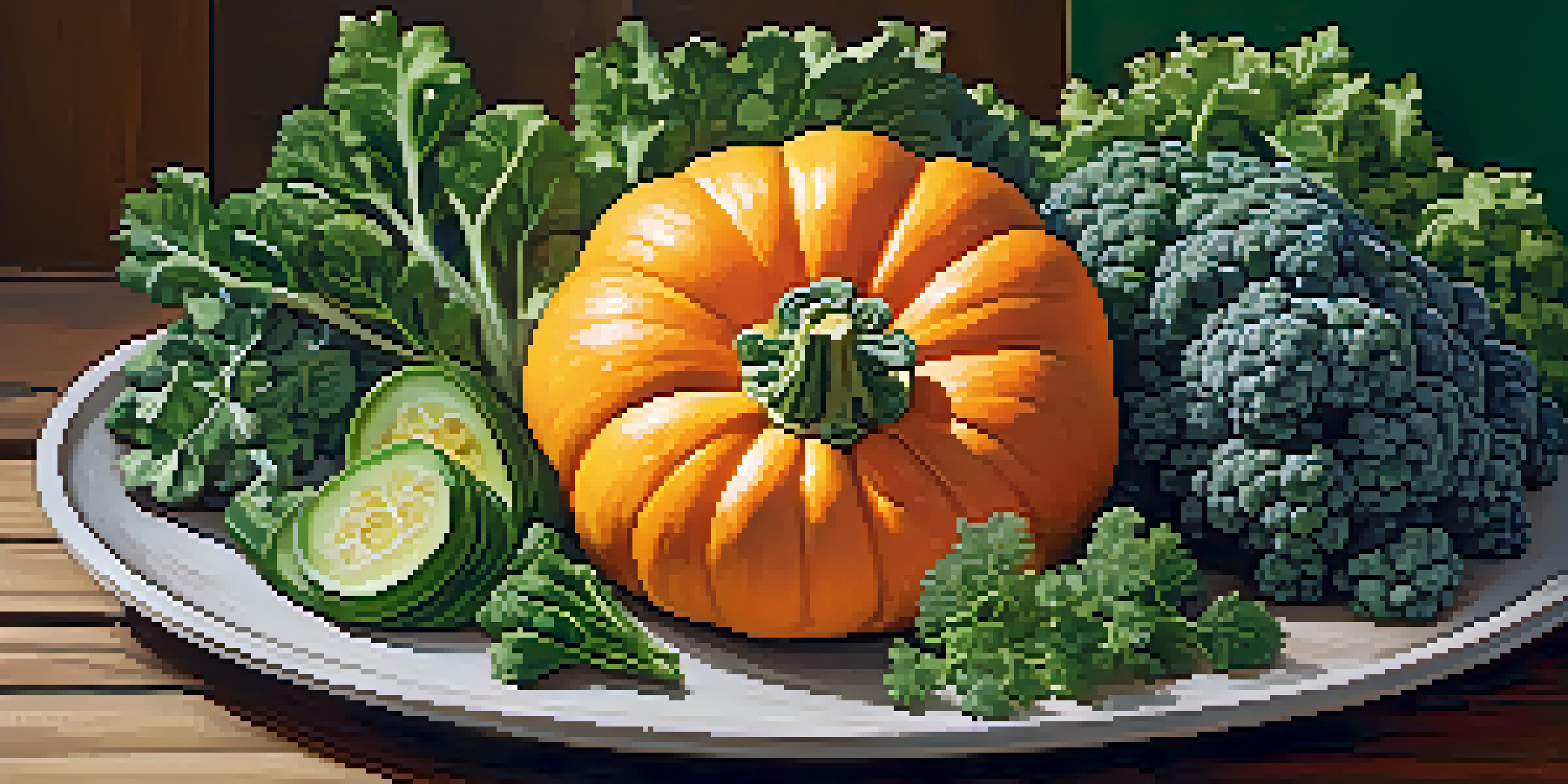Color Theory in Culinary Arts: Painting Food for Aesthetic Appeal

Understanding Color Theory Basics in Culinary Arts
Color theory is a set of principles that explains how colors interact and influence perception. In culinary arts, it plays a crucial role in food presentation, allowing chefs to create visually appealing dishes. By understanding color combinations, chefs can enhance the dining experience and evoke emotions through their creations.
The Emotional Impact of Colors on Food Perception
Colors can evoke various emotions and reactions, which is vital when it comes to food. For instance, warm colors like red and orange can stimulate appetite, while cool colors like blue can suppress it. By strategically using these colors, chefs can influence how diners feel about their meals even before tasting them.
Colors Influence Food Perception
Colors can evoke emotions and significantly impact how diners perceive their meals, with warm colors stimulating appetite and cool colors suppressing it.
Using the Color Wheel to Create Harmonious Dishes
The color wheel is a useful tool for chefs to create harmonious color schemes on their plates. Complementary colors, those opposite each other on the wheel, can create striking contrasts that draw the eye. For example, pairing bright green basil with red tomatoes not only looks appealing but also highlights the freshness of the ingredients.
The Role of Seasonal Ingredients in Color Palette
Seasonal ingredients often come with their own vibrant colors, making them perfect for creating visually stunning dishes. For instance, fall brings rich oranges and deep greens with squash and kale, while spring offers bright greens and pastel hues with asparagus and radishes. Utilizing these seasonal colors not only enhances aesthetic appeal but also supports local agriculture.
Seasonal Ingredients Enhance Aesthetics
Utilizing seasonal ingredients not only adds vibrant colors to dishes but also supports local agriculture and enhances visual appeal.
Plating Techniques to Enhance Color and Presentation
Plating is an art form that significantly affects how food is perceived. Techniques such as layering, stacking, or using different shapes can add depth and dimension to a dish. By thoughtfully arranging colors and ingredients, chefs can create a visual masterpiece that tantalizes the senses before the first bite.
Cultural Significance of Colors in Food Presentation
Colors carry different meanings across various cultures, which can influence food presentation. For example, in some cultures, white symbolizes purity, while in others, red signifies good luck. Being aware of these cultural connotations can help chefs create dishes that resonate more deeply with their audience.
Plating Techniques Elevate Presentation
Thoughtful plating techniques can transform the presentation of a dish, creating a visual masterpiece that engages the senses before the first bite.
The Science Behind Color and Appetite Stimulation
Research has shown that colors can affect appetite and food choices. For instance, studies indicate that people tend to eat more when their meals are presented in warm colors. Understanding this science allows chefs to use colors strategically, not just for aesthetics but also to enhance the overall dining experience.
Experimenting with Color: A Call to Culinary Creativity
Chefs are encouraged to experiment with colors to enhance their culinary creations. This could mean trying new ingredients or even using edible flowers to add unexpected pops of color. The key is to have fun with it, allowing creativity to shine through and transforming each dish into a vibrant experience.